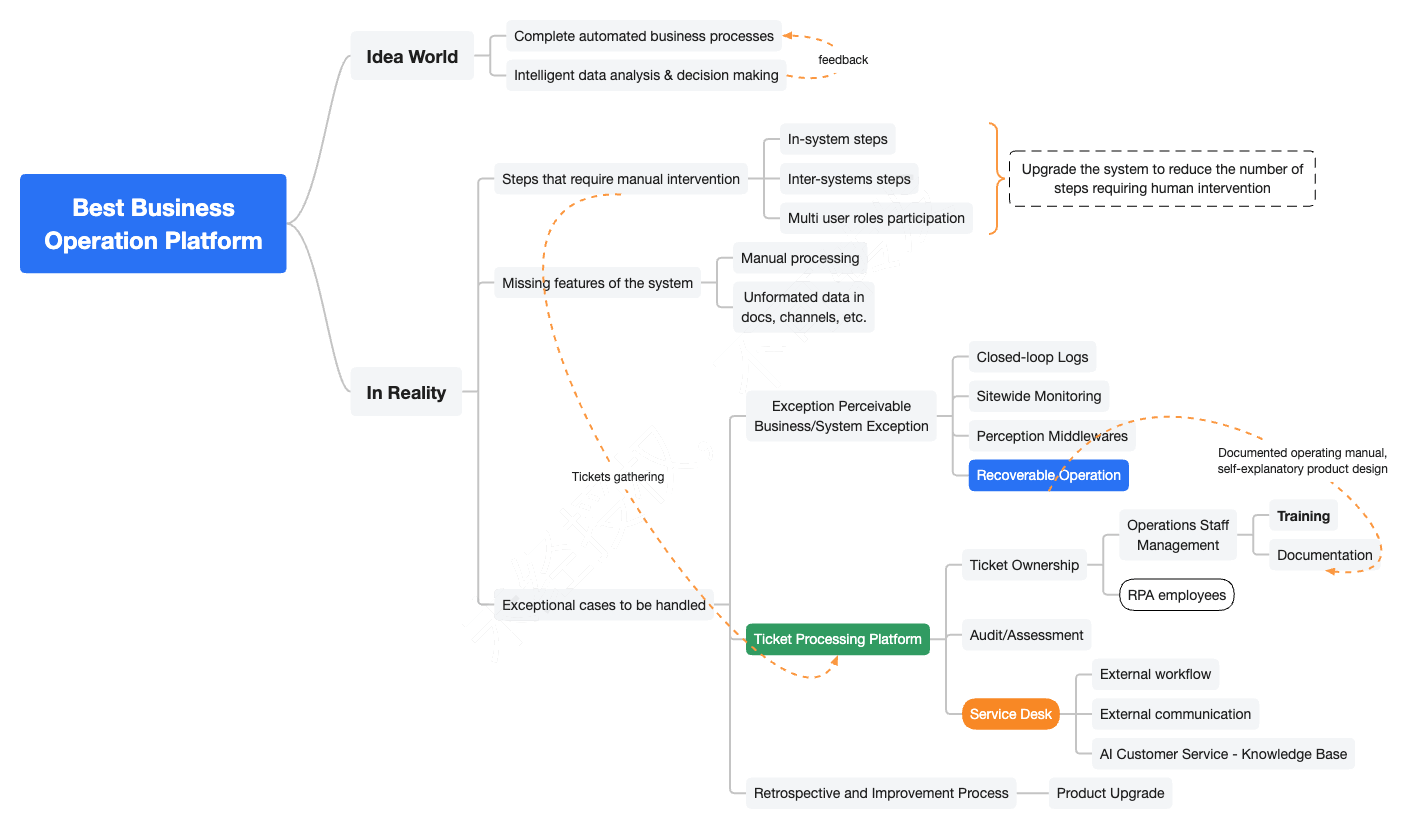💥 The Spark Behind Callgent - Simplifying Business Operations
· 2 min read
The Challenge
When we set out to design an enterprise operation platform, we had a clear vision: to seamlessly track and process business tickets from customers or systems, we have these thoughts:

In a nutshell, we grappled with:
- Diverse, disconnected systems
- Multiple user roles with varying needs
- A mix of structured and unstructured data
- The need for workflow and process automation
The Solution
To tackle these complex and dynamic business processes, we envisioned a tool with the following capabilities:
- Effortless integration of heterogeneous systems
- No coding required for integration
- No need to learn new APIs
- AI-powered service or user invocation
- Semantic data mapping
- Persistent asynchronous
- Progressive invocation
- Natural language SOP orchestration
This vision led to the conception of Callgent, built on these core principles:
- No business logic within Callgent, just invocation and orchestration
- Systems and users function as equal services
- AI-powered semantic data mapping
- Seamless experience for all systems and users with embedded Callgent adaptors
The Journey So Far
We swiftly developed a proof of concept:
- Integration with our Slack, Zendesk, and in-house k8s services
- Services can invoke related users via API, with users responding via Slack or email
- Users can interact with k8s services using natural language in Slack
- k8s exceptions are seamlessly integrated into our ticket processing platform
- External customers experience no differences, as they're approached via Zendesk
Now, we're in the exciting phase of developing Callgent as an open-source product.
We warmly invite you to try it out, share your thoughts, or even contribute.
